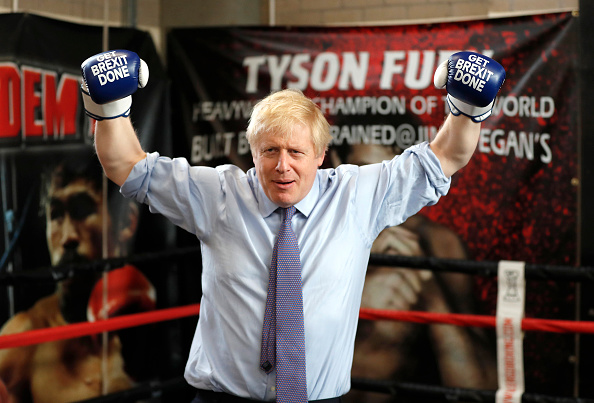For many decades people have been relatively stable in their voting patterns, choosing to stick with their chosen party through thick and thin. But the trend of weaker identification with the main parties in the UK has been growing in recent years. In the 1900 general election, 99 percent of the votes cast went to Conservative, Labour and Liberal candidates. In the 2005 election, the equivalent figure was 95 percent. In 2010, a record of 10 percent of the vote went to non-establishment candidates. In 2015, this number more than doubled– a full 23 percent of all votes cast went to non-Conservative/Labour/Liberal Democrat candidates. But when it came to the 2017 election, things began to look up for the Conservatives and Labour, who recorded the highest joint vote percentage share in any election since the 70s. But just two years later, the European elections proved to be politically devastating for both with the Labour and Conservative parties unable to muster even a quarter of the votes between them. The Conservatives came fifth with their lowest level of support of in any national elections since 1832, and Labour came third with its lowest vote share since 1910.
The scale of this unprecedented voter volatility was recently analyzed by the British Election Study (BES) team. The BES has captured voting behavior at every general election since 1964, through a series of substantial surveys of voters. The study is currently supervised by academics from Manchester University and Nuffield College, Oxford.
Last month they presented some remarkable data and declared the electorate the most volatile in modern political history. As the study makes clear, the current rate of ‘vote-switching’ in British politics, where people switch their vote from one election to the next, is largely unprecedented in the post-war era. Across the three elections held in 2010, 2015 and 2017, a striking 49 percent of people switched their vote. By contrast, between 1964 and 1966, when the survey began, just 13 percent of voters changed their minds.

“Given the UK’s recent history of vote switching and the unpredictability of the current climate, it would be unwise for any political party or commentator to presume how voters will behave in a general election,” said Edward Fieldhouse, professor of social and political science at Manchester University.
Underscoring these developments is another set of BES data that tracks the collapse in the strength of party identification over past decades. In 1964, 48 percent of Conservatives described their party identification as “very strong”; the figure among Labour supporters was 51 percent. In 2017, the comparable figures were 14 percent and 23 percent respectively.
This is not all about Brexit, but Brexit is now accelerating this process with the emergence of partisan Brexit identities cutting across traditional left\right party loyalties, which has long distinguished Labour and Conservative voters. Most voters now feel a closer affiliation with “Remain” or “Leave” than to any of the main parties. Leave voters currently see Johnson as the man to get Brexit over the line and their only route to victory, while Jeremy Corbyn is the most favored candidate to be PM among Remain voters. The weakening of party loyalties can also be attributed to what unites Britain’s current generation of party leaders - that they are all unpopular. Sir John Curtice, one of the country’s most renowned polling experts has even dubbed the election as an “unpopularity contest.” Data compiled by Ipsos-MORI reveals that while Johnson has the lowest ratings of any new prime minister, Corbyn has the lowest ratings of any opposition leader since records began.
The EU referendum and the three years of chaos allowed the Lib Democrats to regain much of the ground they lost after the 2010 election by offering a distinct position to cancel Brexit by revoking Article 50, and the Brexit party to reoccupy the space filled by UKIP in 2015. This makes the outcome of constituencies more difficult to predict as, in areas where there are four or more parties gaining larger chunks of the vote, a candidate can, therefore, win with a relatively modest vote share. Recent modeling by Best for Britain has suggested that some seats may be won by vote shares of less than 30 percent. This means that for the two main parties, they must not only focus on winning over new voters but also to hold as large a share of their 2017 voters as possible. Both Labour and Conservatives are likely to lose votes to the Lib Dems and the Brexit party. This is not to say these smaller parties they will win – but if they manage even 10 percent of the vote, it will be who that 10 percent comes from that will make a difference in many seats.
All this suggests that more shifts could be on the way during the lead up to the elections and that polling and predictions of the election outcome should be viewed with a dose of skepticism.









